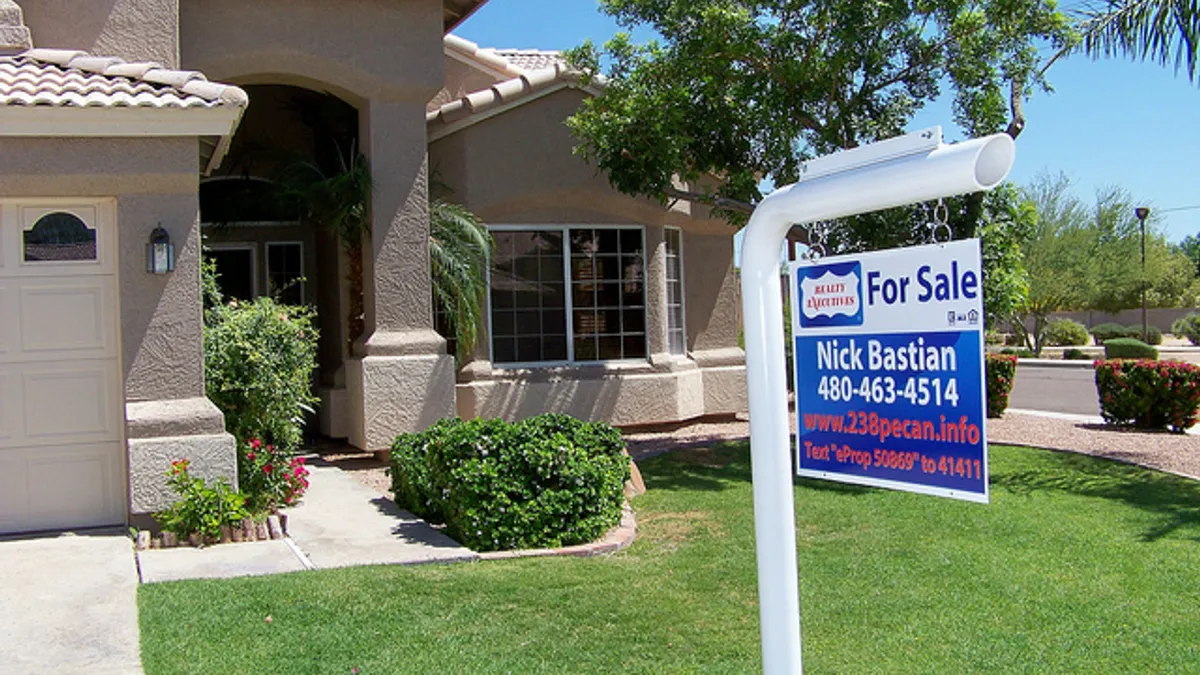Dive Brief:
- Existing home sales, including single-family homes, townhomes, condominiums and co-ops, rose 4.7% between August and September to a seasonally adjusted rate of 5.55 million, the National Association of Realtors reported Thursday. All four major U.S. regions saw sales gains in September.
- The median price of existing homes in September was $221,900 — lower than August's median price of $228,700, but still 6.1% higher than the median price in September 2014.
- Total housing inventory fell 2.6% in September to 2.21 million existing homes available for sale, and unsold inventory is at a 4.8-month supply, down from August's supply of 5.1 months.
Dive Insight:
NAR Chief Economist Lawrence Yun attributed the rise in existing home sales to consistently low mortgage rates and a slight moderation in home prices. "Affordability has slightly improved since the spring and is helping to keep demand at a strong and sustained pace," he said in a statement.
However, the report also revealed a disappointing result from September, as first-time buyer share fell to 29% after reaching its highest percentage of 2015 last month. "Unfortunately, first-time buyers are still failing to generate any meaningful traction this year," Yun said.
The slight dip in available inventory was also not ideal, as inventory concerns — especially for affordable homes — have continued to hold the market back from stronger growth.
Overall, Thursday's report echoes the positive sentiment in the NAHB/Wells Fargo Housing Market Index released Monday, which found that builder confidence rose 3 points to 64 — reaching its highest level since October 2005. The Commerce Department also announced Tuesday that housing starts increased 6.5% between August and September to the second-highest level in eight years.
Existing home sales account for the majority of sales, and the NAR report, combined with positive housing start and builder confidence results, points to an improving residential sector. That growth will come into play when the Fed reconvenes to decide whether to raise interest rates — a decision that, in turn, will significantly impact mortgage rates.












